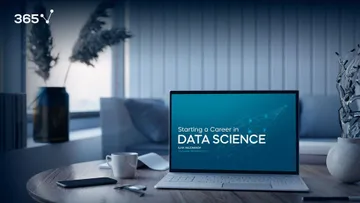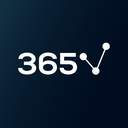Data scientist has been one of the hottest roles in tech for about a decade, and this trend hasn’t ended. With around 90% of the world's data created in the last two years, the demand for people who can analyze and work with this data keeps growing.
Are you looking to start your journey into this in-demand field?
This data science roadmap guides you through the essential skills and knowledge needed to become a successful data scientist—no matter where you are in your journey.
You’ll discover how to learn data science in seven clear steps. Throughout each step, we'll recommend specific courses and projects from our curriculum to guide your learning journey.
Let's get into your ultimate data science roadmap.
Table of Contents
- Build Your Foundation
- Data Analysis and Visualization
- Machine Learning and AI
- Specialized Skills and Tools
- Business Acumen and Communication
- Building Your Portfolio
- Career Development
1. Build Your Foundation
Understanding how to learn data science begins with mastering key technical skills, programming languages, and mathematical concepts.
Mathematics and Statistics
Every aspiring data scientist needs a solid foundation in mathematics and statistics. This forms the backbone of data science and AI. Here's why each component matters:
Essential Math Skills:
- Linear algebra is key for understanding data relationships and machine learning algorithms
- Calculus allows you to optimize models and understand gradient descent
- Probability theory is fundamental for handling uncertainty in data
- Statistical inference is critical for drawing conclusions from data
Our Recommendations:
For those wondering how to get into data science,
- Start with our Statistics, Probability, and Mathematics courses to build this foundation.
- Continue with our Linear Algebra and Feature Selection course to understand the mathematical concepts behind machine learning algorithms.
Programming Fundamentals
Data scientists must have programming skills to analyze data, build models, and automate processes. This section of the data science roadmap highlights the three most crucial languages you'll need:
Python
Python is popular among data scientists due to its simple syntax and comprehensive data science libraries. Beyond basic coding skills, you'll need to master essential libraries like pandas for data manipulation, NumPy for numerical computing, and scikit-learn for machine learning.
Wondering how to learn data science? Python is the perfect place to start.
Our Recommendations:
- Start with the Python Programmer Bootcamp to build a strong foundation.
- Practice with hands-on projects like Building Conway's Game of Life.
- Master essential libraries through Data Preprocessing with NumPy and Data Cleaning and Preprocessing with pandas courses.
SQL
Data scientists use SQL to work with databases and handle large datasets. You'll need to master querying, data manipulation, and complex aggregations.
Our Recommendations:
- Begin with our comprehensive SQL course to build a strong foundation
- Practice with projects like Customer Engagement Analysis
- Apply your skills through real-world scenarios in our User Journey Analysis project
R
R is a specialized programming language for statistical computing and data analysis, known for its powerful statistical packages and high-quality visualization capabilities.
Our Recommendations:
- Begin with our Introduction to R Programming course to learn the fundamentals
- Practice statistical analysis using R's specialized packages
- Master data visualization techniques for professional outputs
- Apply your skills in projects like Housing Market Data Analysis in R
2. Data Analysis and Visualization
Data analysis is the foundation of data science and AI, requiring both technical expertise and strategic thinking to derive insights from data. In this section of our data science roadmap, let's explore the key skills and tools you'll need to master:
Key Skills
- Data literacy is how to read, interpret, and communicate data effectively
- Data strategy is all about developing frameworks for collecting, analyzing, and utilizing data
- Statistical analysis is when you apply statistical methods to understand patterns and relationships
- Problem-solving lets you approach complex data challenges with structured solutions
- Data quality management ensures data accuracy, completeness, and reliability
Essential Tools
- Excel - Functions, pivot tables, and data modeling for spreadsheet analysis
- Tableau - Interactive dashboards and data storytelling capabilities
- Python libraries - Matplotlib, Seaborn, and Plotly for diverse visualization needs
- R - Statistical computing with ggplot2 and specialized analysis packages
Our Recommendations:
- Develop a deeper understanding of data with our Data Literacy and Data Strategy courses
- Continue with our Intro to Excel course and move onto the Data Analysis with Excel Pivot Tables course to master spreadsheet analytics
- Learn interactive visualization through our Intro to Tableau course
- Advance to our Complete Data Visualization course for programming-based visualization
- Practice your skills through hands-on projects like:
- Creating interactive dashboards in our Newsfeed Analysis in Tableau project
- Applying Python visualization techniques in our Customer Segmentation analysis project
- Mastering Excel analytics through our Baby Care Product Analysis with Pivot Tables project
- Advance your tableau skills with our Student Onboarding Analysis project
3. Machine Learning and AI
As your data science and AI journey progresses, you'll need to grasp machine learning and at least the basics of artificial intelligence. This stage combines mathematical foundations with programming skills to create intelligent systems:
Core ML Concepts
- Supervised learning (regression, classification) and unsupervised learning (clustering, dimensionality reduction)
- Model evaluation metrics, cross-validation, and hyperparameter tuning
- Feature selection, engineering, and scaling techniques
- Neural networks architecture and deep learning applications
Our Recommendations:
- Start with our Machine Learning Process A-Z course for a comprehensive foundation
- Advance to Deep Learning with TensorFlow 2 for neural network expertise
- Complete the ChatGPT for Data Science course to enhance analytical capabilities
- Practice with hands-on projects like:
- Music Genre Classification using PCA and Logistic Regression
- Machine Learning for User Classification to predict purchasing behavior
4. Specialized Skills and Tools
Enhance your machine learning roadmap with specialized skills and advanced techniques through our comprehensive courses:
Deep Learning and Neural Networks
- Master TensorFlow and Convolutional Neural Networks in Python
- Build practical ML applications with our Machine Learning Deep Dive course
- Explore advanced algorithms in our courses on Naïve Bayes, KNN, and Decision Trees
Modern AI Development
- Create chat applications using OpenAI and LangChain
- Learn vector databases with Pinecone for efficient data retrieval
- Apply Ridge and Lasso Regression techniques in our comprehensive course
- Apply your LLM engineering skills by building an AI-powered interview tool
Development Tools and Infrastructure
- Master version control with our Git and GitHub course
- Work with cloud platforms for scalable solutions
- Handle big data technologies for large-scale processing
5. Business Acumen and Communication
Technical skills alone aren't enough to become a data scientist. This section of the data science roadmap highlights the most crucial soft skills you’ll need to succeed in any role:
- Data storytelling
- Business problem-solving
- Project management
- Stakeholder communication
Our Data-Driven Business Growth, Data Strategy, Project Management, and Communication and Presentation Skills for Analysts and Managers courses will help you develop these essential skills.
6. Building Your Portfolio
As you progress through this data science and AI roadmap, build a strong portfolio—this is especially crucial if you're new to the field, as it demonstrates your ability to work with real-world data and apply your skills in practical situations. Here's what to include:
- Complete hands-on projects
- Contribute to open-source projects
- Document your learning journey
- Create a GitHub repository
Our various practical projects mentioned throughout this article, from Real Estate Market Analysis to Customer Segmentation, will help you build an impressive portfolio.
Explore our full projects library to create your own data science project plan.
7. Career Development
When considering how to learn data science, the last step is preparing for your career transition. What sets 365 Data Science apart is our comprehensive approach to career development. We don't just teach skills—we guide you through your entire journey into data science:
- Create a compelling resume using our built-in Resume Builder tool (sign up free to try)
- Build your professional network by increasing your presence on LinkedIn and through our community forums
- Practice both HR and technical interviews with our AI-powered interview simulator: InterviewAce
- Master interview techniques using our comprehensive guides which you can find on our blog and resources center, including our specialized AI Interview Guide
Our career development resources cover all these aspects in detail, providing you with everything you need to successfully break or transition into data science.
From skills development to landing your dream job, we're here to support every step of your journey.
Become a Data Scientist with 365 Data Science
This data scientist roadmap provides a structured path to help you navigate your journey into data science.
Remember that becoming a data scientist is a marathon, not a sprint. Focus on understanding concepts thoroughly and gaining practical experience through projects.
Whether you're interested in data science, machine learning, or artificial intelligence, this roadmap for data science will guide you toward your goals.
Start your journey for free today with 365 Data Science's comprehensive curriculum.
Begin with our foundational courses in Statistics and Mathematics, progress through our Python Programmer Bootcamp, and advance to specialized courses in Machine Learning and AI.
With our interactive projects, Resume Builder tool, and AI-powered InterviewAce simulator, you'll be fully equipped to land your dream data science role. Join thousands of successful graduates who have transformed their careers through our structured learning path.
FAQs







